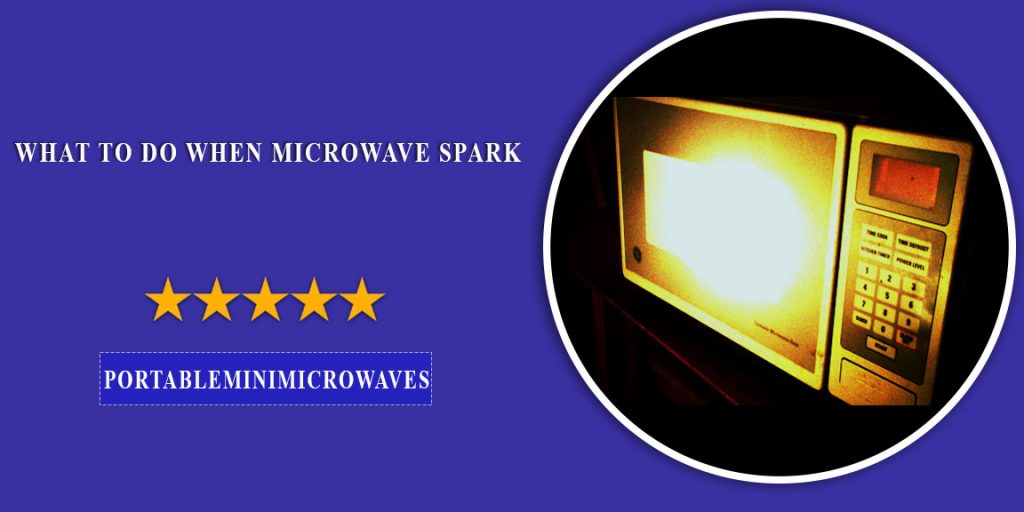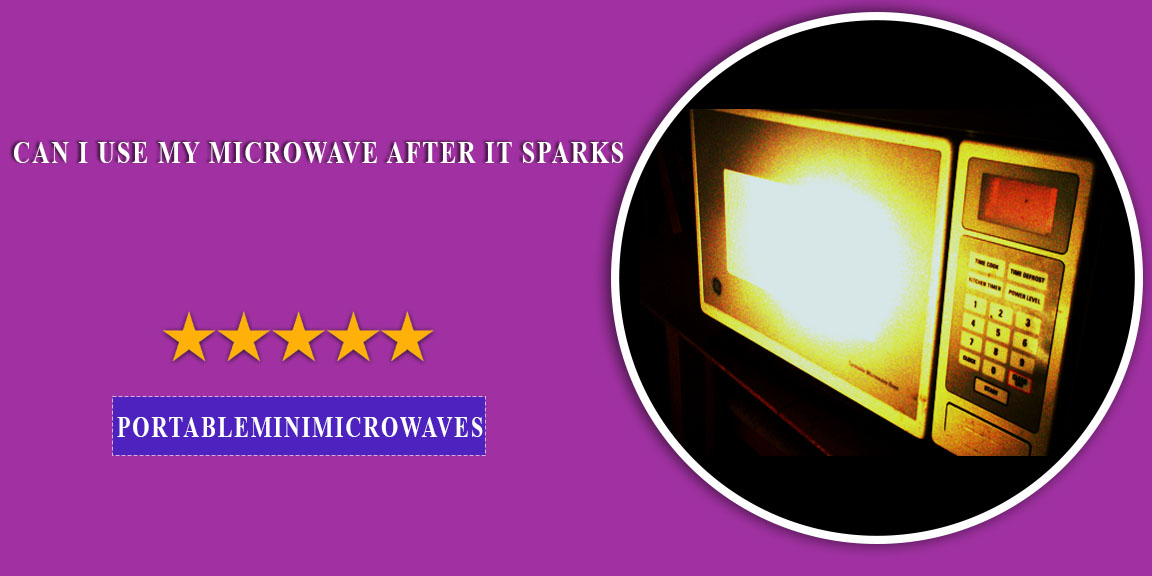Sparks are very common in microwaves, and they do not necessarily mean that your microwave is damaged. People usually get scared and start panicking when they see a spark inside their microwave.
A few sparks cause no problem with your microwave. So you do not need to straight away go and consult a repair shop on such a small matter. Of course, if the sparks are of high intensity and number, you should worry; otherwise, be calm. Thus, you can still use your microwave after it sparks.
The sparking depends on the cause of the spark and the current condition of the microwave. If the level of spark is minor and is caused due to some metal piece left inside the microwave, which is mostly the cause, then it is okay to keep still using the microwave.
But if the spark occurs every time you use the microwave, the reason does not appear. It would be best not to use the microwave without consulting a repair shop because such sparks might ignite certain oily foods and cause fire hazards.
What Causes Microwaves to Spark:
Metal:
Metal is one of the most common causes of sparks inside a microwave. When there is a change in the electrical flow, the microwaves cause sparks. This phenomenon is called Electrostatic discharge, where there is a sudden change in the current.
Suppose some mental peace comes under the contact of microwaves inside a microwave oven so that it cannot penetrate a metallic surface. In that case, it bounces back, leaving a charge built on the metal surface, causing a spark. It is a prevalent reason for sparks, and if it happens frequently, it might damage your microwave oven.
The Waveguide Cover:
Sparks can happen due to dirty or damaged waveguide covers as well. The waveguide cover is like a small mesh square, and as its name suggests, it guides the heat waves from magnetrons (source of electromagnetic waves) towards the center of the microwave where food items are present.
Sometimes the food splatters get collected on the Waveguide cover, making it difficult to perform its normal functioning. Thus the residue accumulated over the Waveguide cover sometimes gets sparked.
But you can solve problems in such cases by cleaning the microwave. However, if the sparks still appear, then it is a sign that your Waveguide cover is either damaged or broken, so it is better to take the services of a local repair shop and replace the Waveguide cover.
A faulty Diode:
A Diode is responsible for generating and balancing the heat waves inside a microwave oven. If your microwave’s Diode is broken, then sparks will appear in your microwave.
In addition, you may find that your microwave Diode is broken or damaged if your food takes longer to cook. In such a case, go to a repair shop and replace or repair your Diode because it can raise microwave arching as well.
What to do when a microwave spark?

Microwave sparks are alarming, but not to a degree where you suddenly get so scared. If your microwave is sparking, it signals that something is wrong now; all you need to do is repair that fault.
Here are some suggestions:
- Firstly, unplug your microwave as soon as you see a spark. Although a tiny spark is not dangerous, still being on the better side is a good measure.
- Secondly, check the interior of your microwave and look for any piece of metal left. If there is any, remove it as it is a common cause for sparks in a microwave.
- Make sure to clean your microwave after every use thoroughly. Also, keep an eye to wash the residue from food materials left behind, and the Waveguide sheet is safe and protected, which is a potential cause of sparks in a microwave.
How to Stop a Microwave Sparking:
As discussed earlier, tiny and non-frequent sparks are not a problem, but if there are too many sparks frequently appearing, it is a problem that needs to be addressed. Here are some suggestions to prevent your microwave from sparking.
- Check your microwave properly for any left metal pieces inside, even the tiniest ones. Make sure to remove any if found. Moreover, make sure to not place food items in a metal or steel container inside a microwave because it cannot penetrate a metal surface, so they result in sparking.
- Keep checking your Wave guard cover for if it is clean or not. If it is dirty, then clean it and if damaged, then replace or repair it.
- Keep an eye on your microwave’s Diode because if it is broken, that is a piece of bad news. A broken or damaged Diode can cause sparking and many more problems in the future. So you must replace or repair your Diode if it is broken or damaged.
